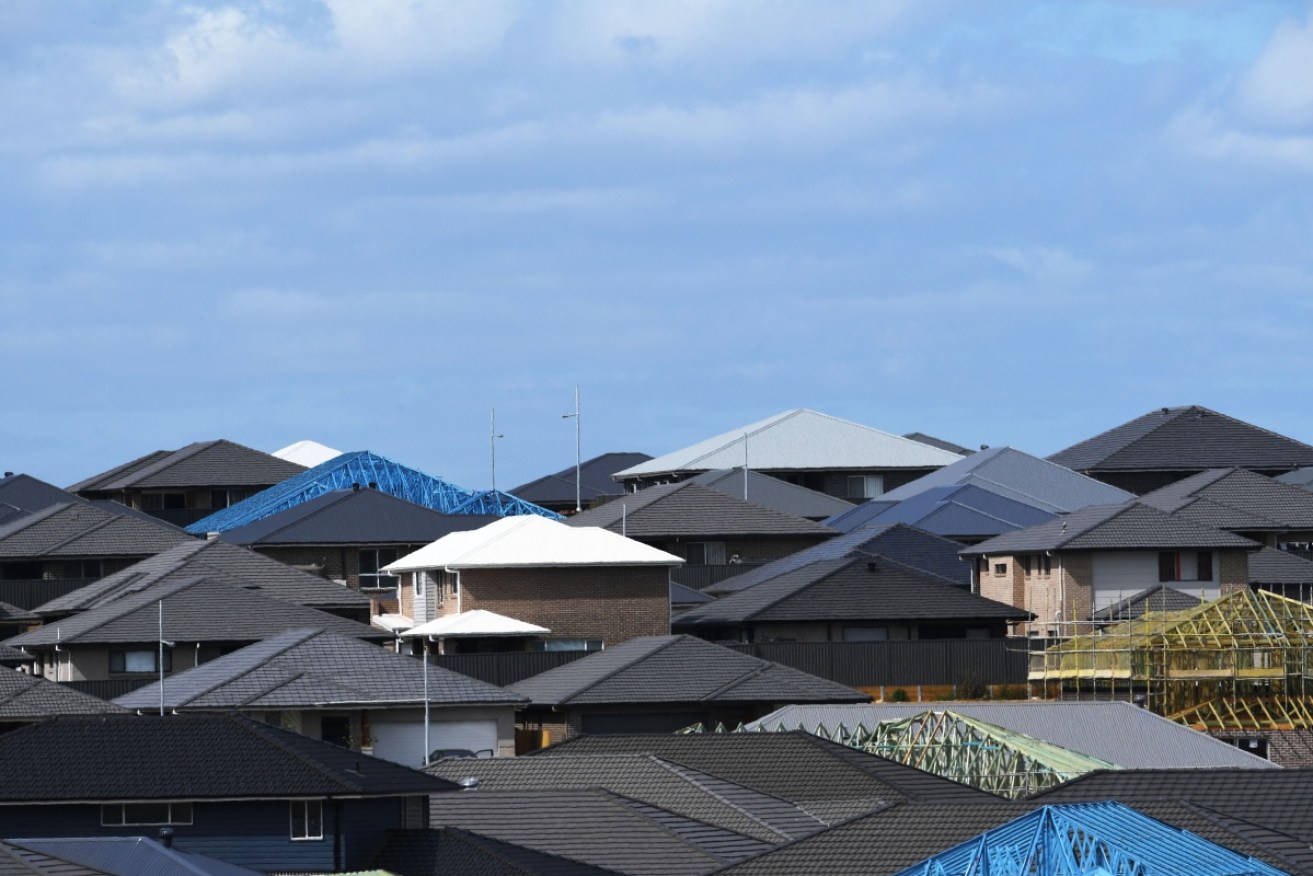Australia’s 20 hottest suburbs for housing


Melbourne was home to the majority of the nation's hottest housing hotspots last financial year. Photo: AAP
When it comes to housing hotspots around Australia, one city in particular is streaking ahead of the competition.
A roundup of the nation’s population and residential building hotspots reveals that Melbourne is home to a majority of Australia’s fastest-growing suburbs.
The Victorian capital boasts 12 of Australia’s top 20 areas for residential building and population growth in 2016-17, a new report by the Housing Industry Association reveals.
The adjoining suburbs of Mickleham and Yuroke, located 32 kilometres north of the CBD past Melbourne Airport, were collectively the fastest-growing area in Australia with a whopping 35.3 per cent population growth and $222.9 million worth of residential buildings approved in 2016-17.

A new housing estate in the Melbourne suburb of Mickleham, which recorded the fastest housing and population growth in Australia in 2016-17. Photo: YouTube
Large infrastructure projects in the area are fuelling employment growth and the population is forecast to grow by more than 24,000 people over the next 10 years, HIA found.
The report hammers homes Melbourne’s dominance as a destination for interstate migrants — drawn by employment prospects stemming from the building boom, infrastructure projects and a growing services sector — with the recent census unearthing 144,000 more residents in the Victorian capital than were previously known.
Boasting population growth of 2.4 per cent compared to the national average of 1.6 per cent, Melbourne has been “the hottest spot in the country” for the past two years, and has “a while to run yet”, HIA principal economist Tim Reardon said.
Last year’s top hotspot, Pimpama on Queensland’s Gold Coast, came in second with annual population growth of 30.8 per cent and $352 million of residential building approvals.
“The Gold Coast has seen some of the strongest and most sustained population growth in the country for a long period of time … Some of those areas are reaching a level of capacity and people may need to switch to nearby areas,” Mr Reardon said.

Melbourne is home to 12 of Australia’s top 20 housing hotspots. Source: HIA
Cranbourne East in Melbourne’s south-east was third with 27.4 per cent population growth and $638.6 million worth of residential building approvals.
Sydney took fourth spot, with the adjoining suburbs of Cobbitty and Leppington recording 21.9 per cent annual population growth and $610.4 million worth of residential building approvals.
Fifth spot went to adjoining Blacktown suburbs of Riverstone and Marsden Park, which grew by 21.1 per cent and recorded a staggering $736 million worth of residential building approvals.
While some inner-city areas experienced strong growth — such as Melbourne’s Docklands which was seventh with a population growth of 14.7 per cent — the majority of population and residential building growth took place in outer-suburban suburbs, towns and cities with close proximity to capital cities, the report found.
“At this stage the growth areas are outer-suburban areas where traditional detached houses are the popular choice,” Mr Reardon said.
Despite the current preference for detached housing, Mr Reardon expects the demand for apartments —which make up a third of residential purchases — to increase in coming years as “solid employment growth” in Sydney and Melbourne causes a “switch in demand” for apartments versus detached housing.
“Once the current suite of apartments clear the market there will be another lot behind that supported by strong sales and population growth in [inner-city] areas,” Mr Reardon said.

Next big thing: inner-city apartment living is on the rise, preliminary figures for 2017-18 show. Source: HIA
Indeed, a preliminary list of “potential ‘new’ hotspots” based on 2017-18 performance is dominated by inner-city suburbs in Sydney and Melbourne, a phenomenon Mr Reardon attributes to a growing trend towards higher-density, inner-city apartment living.
“There’s been a quantum shift [towards inner-city apartment living] that we’ve seen. The causes of that are proximity to transport, jobs and price of land.”








